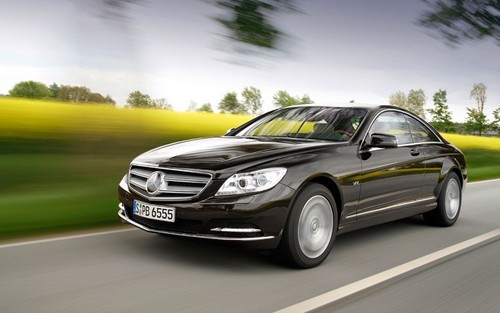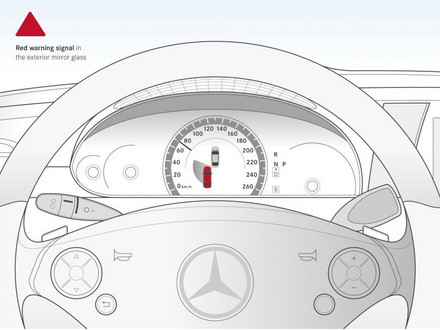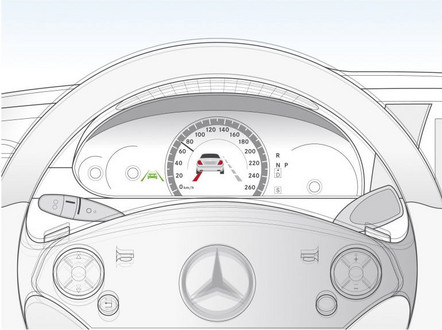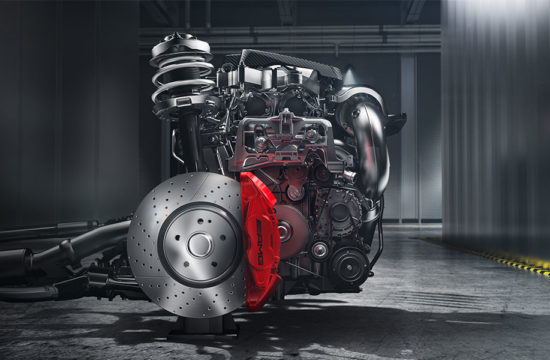
The new 2011 Mercedes CL-Class is introducing two new safety technologies which will be added to the long list of the current systems working in high-spec Mercedes Benz models to keep the passengers out of trouble. The new systems include Active Lane Keeping Assist and Active Blind Spot Assist. In brief, these systems, using radars and cameras and sensors, warn the driver in case there’s a car in blind spot and if he or she did not respond well, they will take charge of the situation and make things right through corrective braking.
If Mercedes keep developing high-tech stuff like these, their cars will soon become impossible to crash! More details after the jump.

Active Lane Keeping Assist
Using a multi-purpose camera mounted in the windshield and a computer that analyzes the images, Active Lane Keeping Assist recognizes lane markings and alerts the driver by simulating rumble strip vibrations in the steering wheel (via an electric motor) if the car drifts from its lane unintentionally. Should the driver fail to react to this warning, the car intervenes by gently braking the wheels on the opposite side of the car. The unequal distribution of braking forces causes a yaw movement which helps the driver to stay in their lane. Active Lane Keeping Assist makes use of the existing ESP® (Electronic Stability Program) system to apply the brakes and maintain vehicle control.

Active Blind Spot Assist
The second innovation on the 2011 CL-Class, Active Blind Spot Assist, monitors both blind spots alongside the vehicle using close-range radar sensors. When a vehicle is detected, a yellow warning triangle is illuminated in the corresponding side-view mirror. Should the driver disregard this warning and activate the turn indicator, the warning triangle changes to red and an audible warning also sounds. If the driver continues to ignore these warnings and moves dangerously close to a neighboring vehicle, the system activates corrective braking intervention to the wheels of the opposite side of the vehicle. Like Active Lane Keeping Assist, the yaw movement helps correct the car’s path or minimize the consequences of a collision.








